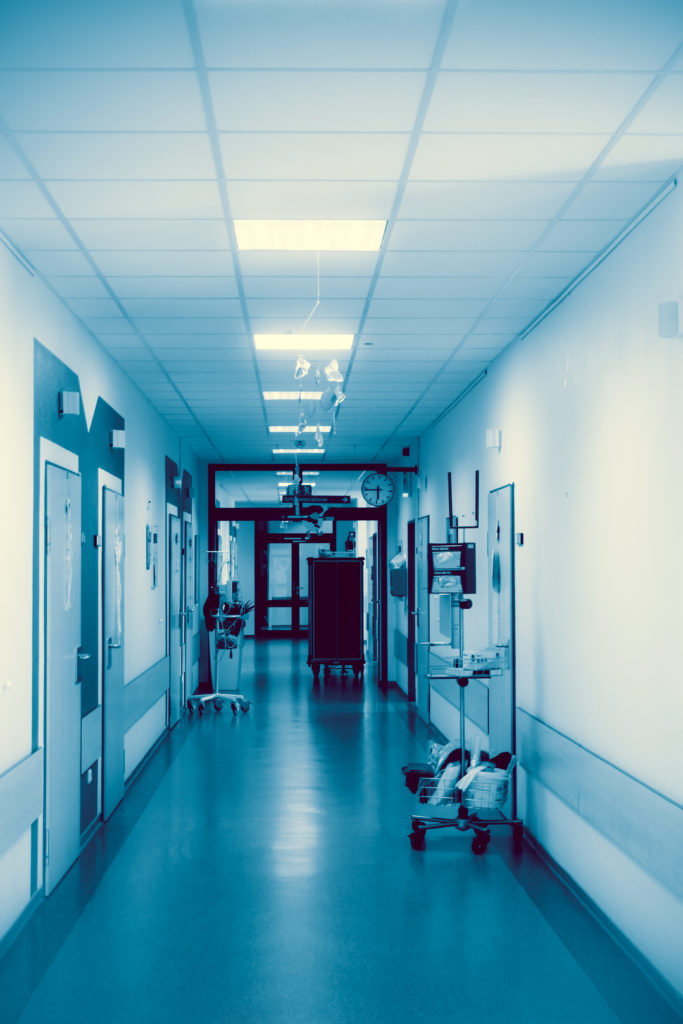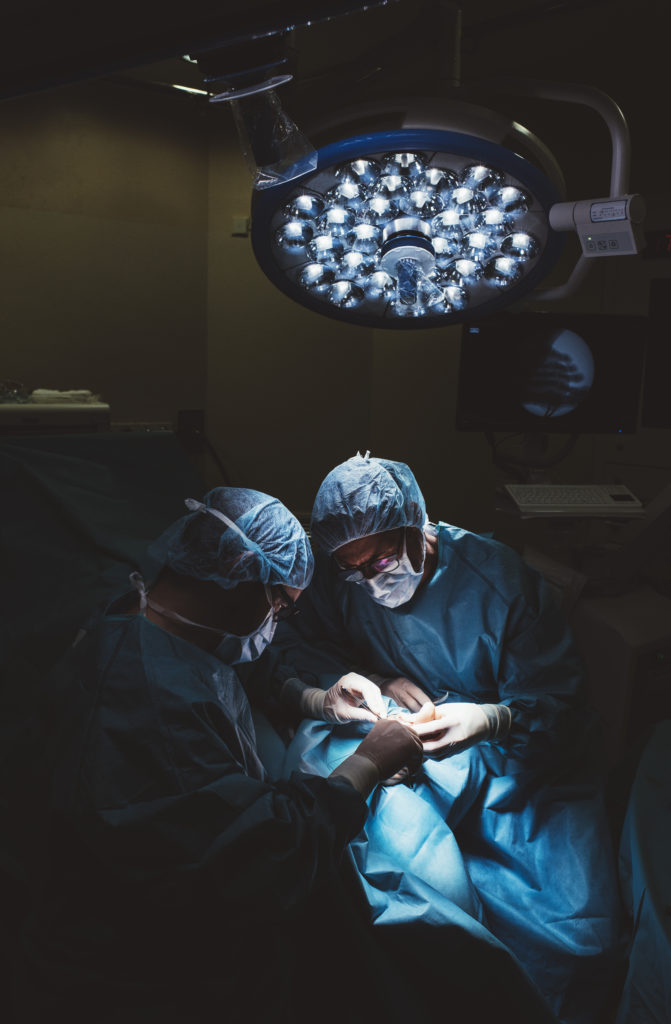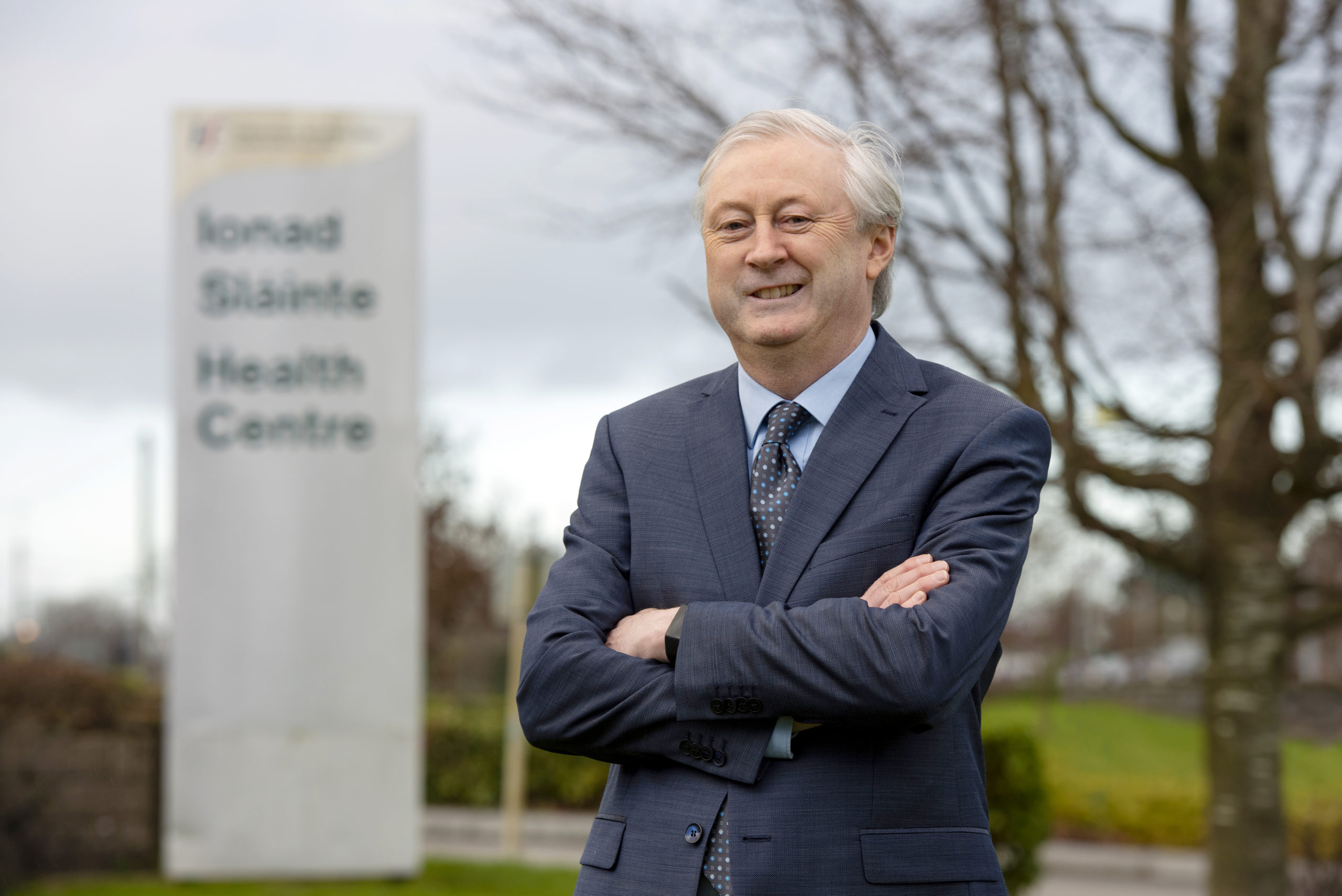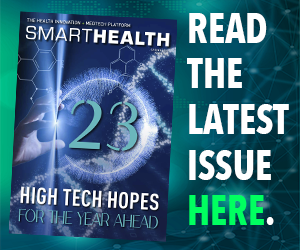Martin Curley > Citizen + Professor of Innovation MU + Director of Digital Transformation, HSE + Chair IDHLSG
Ireland is the twelfth most prosperous, thirteenth happiest country in the world but our health system is ranked number 80 in the world. This unfortunately translates into lots of unnecessary pain, and indeed deaths, than should not be case for a country of our economic and societal standing.
With many of the leading tech, medtech and pharma companies in the world having significant operations in Ireland, how could this be the case? One reason is that no one has explicitly architected or engineered the system, it has just grown by osmosis.
Well, rather than further analyse why, let’s discuss what we can, and indeed are doing, about it. But first let’s take stock of where we are.
We have the highest acute bed occupancy in Europe running at an average of over 96%. Our healthcare costs are 20% above the EU average event though we have a younger population.
We have the second highest rates of obesity in Europe. According to FutureProofingHealth.com, we were last in Europe for telehealth alongside Romania and Serbia. We are 19th in Europe for personalised technologies with Lithuania and Poland. They also
noted outmoded and outdated IT systems are a hallmark of the Irish health service. We have high waiting lists. We are fourth last in the OECD countries for Electronic Health Maturity.
Well. What can we do about this?
There is hope, serious hope. Recently a group of citizen leaders, otherwise known as professionals and patients with both profit and altruistic motives, came together to form the Irish Digital Health Leadership Steering group. Key leaders, such as Professor Richard Costello, Dr Michael Sugrue, Maeve McGrath, Gary Boyle, Myles Murray and Dr Charles Larkin, from all four dimensions of the so-called
quadruple helix – Government, Industry, Academia and most importantly patients/citizens. We all believe that Ireland can leap frog to be a European Leader in Health through the rapid and radical adoption of digital technologies.
Under Paul Reid’s leadership the HSE showed remarkable agility and resourcefulness in response to Covid, if the same response could be mobilised to the Digital Health opportunity we could make dramatic progress quickly.

Several years ago I introduced a digital health innovation strategy called Stay Left, Shift Left, suggesting we could create a new kind of Moore’s law for healthcare by collaborating and innovating together in a consistent direction. This has gained momentum as potentially a new paradigm for digital health reform.
I was privileged to share it at the United Nations General Assembly science summit last September, which has resulted in a multi-author paper helping shape the paradigm. Stay Left, Shift Left is a digital health innovation strategy which aligns very closely with Sláintecare. Stay left is about keeping people well, or if a citizen happens to have a chronic condition that he/she can be managed best of all from home. Shift Left is about moving patients as quickly as possible from acute care to community to a home setting. We are increasingly finding solutions that allow us to do this both efficiently and effectively.
Our goal is to leapfrog from a health system that is primarily paper, presence and acute centred to one that is digital, home and
community-based, cloud-based and most importantly, patient-centred. We will move towards a healthcare system where the primary improvements in life expectancy and health outcomes will be enabled by digital technology, data-driven care and innovation, enabled by disruptive technologies such as the Internet of Things and artificial intelligence.
Peter Diamandis says once something is digitised it begins to behave like an exponential technology. By using more hospital-at-home solutions and telehealth we can save money and the environment while providing equivalent care with better quality of life. In a remarkable Living Lab with Adult Cystic Fibrosis patient at Galway University Hospital, remote monitoring using the PatientMPower app is estimated to save $898 in travel costs per patient, 29 hours in travel time and a whopping 34 days per patient (including carer’s) in work or education days.
In addition remote monitoring was estimated to save 284kgs of carbon reduction per patient per year. The NHS is estimated to account for around 7% of UK’s carbon footprint, so this saving could be a brilliant derivative sustainability benefit from telehealth.

The rapid adoption of Hospital at Home solutions can deliver multi-factor benefits and ease the burden on our heavily stressed acute system. A multidisciplinary community virtual ward study led by Dr Clare Lewis showed home care was 10X more cost effective than hospital care and that there was an 81% reduction in bed days and and an 87% reduction in A&E presentations.
With results like this why isn’t this solution being more rapidly adopted – it is a question of courage, conviction, culture and capacity. By capacity I mean absorptive capacity – the healthcare system is so stressed and focussed on ‘the rule of rescue’ that there is not the capacity to implement these solutions. That’s one reason why we need an ecosystem approach where working together we can create capacity and a culture to faster adopt radical innovations.
We need to radically shift our thinking from considering health as a cost, to health as an investment. We are using a sophisticated digital innovation methodology called OI2 for short. This was introduced during the Irish presidency of the EU. At its simplest the goal of OI2’s goal is to innovate to create sustainable, intelligent living and to create shared value defined by ‘wellbeing, welfare and wealth’. Good health promotes wealth. We need to rearchitect our health system because today too many people get paid more to do the wrong thing.
Investing in disease prevention
We need to significantly increase our spending in health promotion and disease prevention. Chronic diseases can’t be cured but they can
be prevented. We now have the knowledge and technology to help us preserve health and detect early onset of chronic disease, which can be reversed.
Ireland spends just 3% of its health budget on health promotion and preventative health. But according to McKinsey this is where the 67% of
the benefit and untapped potential is. If we could shift a small percentage of our spending to health promotion and preventative health we would have extraordinary benefits – people feeling better and reduced health costs. I suggest we should aim to triple our health promotion spending in five years.
Health and digital health literacy are very important factors in having better outcomes for citizens and patients. People with low health literacy have higher medical costs, more A&E visits and have longer and more stays in hospital.
We also need to rethink the clinical care paradigm. Better clinical care has delivered amazing health benefits and life expectancy improvements over the last 50 years. But clinical care accounts for just 10% of health outcomes. Lifestyle factors such as nutrition and exercise account for 40% while genetics account for 30%.
If we could make improvements in nutrition and lifestyle we could see extraordinary benefits – better health and lower costs. We need to take a long hard look at what we eat. More and more knowledge is being shared about nutrition.

Thomas Edison wrote over 100 years ago that ‘The doctor of the future will give no medication but will interest his patients in the care of the human frame, diet and in the cause and prevention of disease’.
Pioneers in Ireland like Dr Dave Foley of the Hermitage Clinic and Dr Emmet Byrne of Centric Health are leading on lifestyle medicine here. It is estimated by the American College of Lifestyle medicine that about 80% of healthcare spending in the US is linked to unhealthy lifestyle choices. Chronic diseases such as type 2 diabetes, heart disease, hypertension and so on, are very common and high cost can be addressed through lifestyle medicine.
When a Digital Therapeutic is used in combination with lifestyle medicine, real-time feedback and support can be given to patients to help them with health improvement.
Research may be indicating that, for example breakfast cereals, white bread and other high carb food are likely factors involved in driving an impending type 2 diabetes pandemic. Changing what we eat and how we exercise can have a much higher impact on our health than prescribed drugs – and it’s known that common drugs may only be effective for 60% of a particular cohort of patients. Better nutrition and exercise works for everyone.
Redicare and Salaso are two Irish companies who are riding this new paradigm. Redicare uses a digital therapeutic to reverse type 2 diabetes, while Salaso prescribes physical exercise to improve health and accelerate rehab.
Stay Left, Shift Left
In March, we held a national working conference on Digital Health attended and supported by the entire Irish health ecosystem – this was about improving health, creating jobs and a more sustainable environment.
Designed as an Intellectual Supercollider, it aligned around a common strategy for digital healthcare transformation. Stay Left, Shift Left (SL2) was a conference for the coalition of the willing – with the introduction of a new paradigm there will be early adopters and often blockers too. Learning from 19th century German philosopher Arthur Schopenhauer we can say, all new paradigms pass through three stages.
First, it is ridiculed. Second, it is violently opposed. Third, it is accepted as self-evident. We have witnessed the first two phases but now digital health is becoming very real – necessity is the mother of invention. We are finding with digital innovation that SL2 innovations can often deliver four kinds of benefits sometimes called the quadruple aim – first better care and outcomes, second lower cost or better value, third better patient and clinician experience and lastly better patient and clinician quality of life.
When a digital innovation delivers all of these benefits it is much easier adopted and moves from a push to a pull. We should specifically target digital innovations that deliver on all four of these benefits.
Stay Left, Shift Left – 10X is a radical digital innovation plan for Ireland’s health service. The National Digital Health Conference, an open innovation 2.0 conference, convened by the Irish Digital Health Leadership Group and anchored by the HSE Digital Transformation group, theme was: Stay Left, Shift Left – 10X. Seeing is Believing.
The goal was to drive conversation, convergence, cohesiveness and a coalition around a national digital health strategy where our collective capabilities, capacities, competencies and commitments are mobilised together using courage and confidence to deliver radical 10X change and care. Incremental innovation is no longer enough. Healthcare demands and costs are outpacing clinician availability and system capacity. Radical innovation is required.
During the working conference, we shared 10 broadly agreed principles which will underpin the radical transformation required.
Organisations are no longer the unit of competition – the ecosystem is the unit of competition and an ecosystem based on competition is our best chance of driving value-based transformation.
We are using the bleeding edge Open Innovation 2.0 Methodology to deliver this shared value of wellbeing, welfare and wealth. Together with the ecosystem, we demonstrated over 10 examples of where digital health solutions are already being used to deliver tenfold (10X) benefits – services that are 10X faster, cheaper, better and higher capacity.
A Heartcare at Home living lab with Centric Healthcare and Roche with over 100 heart failure patients showed a 10X reduction in hospitalisations and a 10X increase in the level of patient review. Patients also had a much higher sense of wellbeing as they felt they were being looked after all the time.
This increases acute capacity and creates more appointments to help reduce waiting lists. A Chronic Care living lab in associated with Age Friendly Ireland and Wexford County Council reduced hospitalisations, dramatically reduced the cost of care, improved patient wellbeing and had an incredible 98% patient engagement rate. This living lab is now extending to four other counties in the south east in conjunction
with each county council.

The future of elder care is being built here in Ireland with companies such as Tunstall and Halocare who have support centres in Bunclody and Carlow where they can remotely monitor, support and help older people. They can help predict the early onset of chronic disease and help drive earlier interventions.
A new Vital Signs Automation system powered by Galway SME Synchrophi, installed in Cavan and Tallaght Hospital, is allowing earlier detection of deteriorating patients, eliminating early warn score errors, while improving both the nursing and patient experience and freeing up time for care.
The evidence from Synchrophi’s installations in Scotland shows that it reduces average length of stay and thus translates into increased bed capacity. A bed capacity increase of a modest 5% translates into the equivalent of adding a new 500 bed acute hospital to the country at much less than one hundredth of the cost. This is exponential thinking. This is 10X technology. This is Stay Left, Shift Left at work.
To really implement Stay Left, Shift Left in Ireland we could be the first country in the world to provide a rapid screen, personal health record and wellness device/digital therapeutic to all eligible residents for little more than the cost of a few cups of coffee and a Nando’s meal per citizen per year. How do we know?
Well, we already tested it in a living lab in Careplus Pharmacy in Dunboyne a few weeks ago – in a unique architectural innovation together with Careplus Group, Full Health Medical, Patients Know Best, AWS, Google, Fitbit, Roche and others we ran 20 citizens through this process.
The screening took 10 minutes and within 24 hours each citizen had a high quality screening report, a personal electronic health record and a fitbit device and digital therapeutic. For me, the screening identified that I was generally fit but identified a blood pressure medication issue, which is now being fixed.
We need to do a lot more testing but by using existing Covid-19 testing and vaccination infrastructure we could do this for many at less than the cost of a PCR test. Why not? It’s just a matter of deciding to do it. Healthier citizens and lower costs. Makes sense to me.
Our goal is to be a European, and then global leader, using digital as a force multiplier to allow all citizens live healthier lives and achieve a sustainable health system. The conference was designed to be a Digital Health Intellectual Supercollider
– this was a coalition of the willing, leaders, clinicians, patients and academics with professional and altruistic ambitions who came together to commit to work together to drive this change.
An emerging business trend is the economy of mutuality where organisations have both profit and purpose motivations. This is about transforming the economic system by creating a mutuality of benefits amongst all stakeholders – sometimes called the ‘sharing’ economy. At the conference we had intensive networking and new ideas, concepts and solutions were showcased, combined and generated.
In Ireland, we should leap ahead and move towards an Accountable Care Ecosystem (ACE). In an ACE, doctors, nurses, hospitals and other healthcare providers work as a networked team to deliver the best possible coordinated care at the lowest possible cost. Each member of
the team shares both risk and reward, with incentives to improve access to care, quality of care and patient health outcomes while reducing costs.
This approach differs from fee-for-service healthcare, where often organisations are paid more for doing the wrong things. For example, individual providers are incentivised to order more tests and procedures and manage more patients in order to be paid more, regardless of patient outcomes.
In the US the FDA estimated that up to 50% of radiology tests may be inappropriately prescribed. In a recent living lab test in Ireland with the Royal Victoria Eye and Ear hospital, X-Wave and Dr. Ronan Killeen found that up to 30% of radiology tests were inappropriate or unneeded. The return on this investment was a whopping 17X as well as enabling increased capacity, reducing waiting lists while reducing radiation exposure for patients.
Network centric healthcare, sometimes called Healthcare 4.0, is the future and organisations such as Centric Healthcare and Navi/Careplus are pioneering this approach in Ireland. A key aspect of Healthcare 4.0 is patient empowerment – new IOT devices, personal electronic health records and digital therapeutics will usher in a new era of better health for us all and likely lower costs.
The doctor doesn’t always know best and the ideas in cardiologist Eric Topol’s book The patient will see you now! are starting to ring true. A transformation of this magnitude needs leadership, integrity, empathy, innovation, commitment, collectiveness, courage and digital as the raw material.
Let’s do this!






